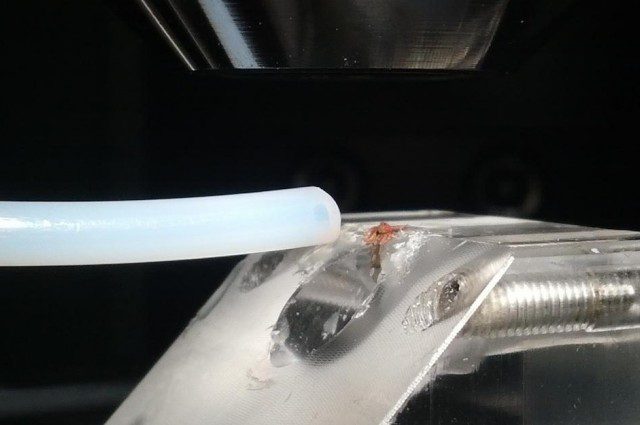Using bioluminescence as a marker in genetic modification is routine for good reason: it provides a very clear visual confirmation that the desired gene has been target correctly. A new application involves modifying the fruit fly Drosophila melanogaster so that their antennae light up in the presence of cancerous cells. The report comes from lead author Martin Strauch from the University of Konstanz and was published in the journal Scientific Reports.
Because of the metabolic differences between cancer cells and normal cells, they emit slightly different odors. The smell is much too subtle for our noses to detect, but there has been research that shows that dogs and bees are capable of sniffing out cancer, as well as Drosophila. The flies were genetically modified so that the scent of breast cancer cells would illuminate their antennae. This represents a step forward in the goal of creating a noninvasive electronic device to sniff out cancer in a clinical setting.
Though the olfactory prowess of the dog has been well documented as they are able to detect a wide range of cancers, including: mesothelioma, melanoma, bladder, prostate, lung, breast, ovarian, and colorectal. Despite the fact that many of these odors are not immediately familiar to the dog, they can be trained quite easily. In recent years, it was discovered that Drosophila has similar abilities. However, knowing if the dog smelled cancerous cells is entirely dependent on the animal’s ability to communicate the finding with humans. This would have been impossible to do with Drosophila and the researchers needed to find a way for the flies to communicate their results.
Drosophila antennae have about 50 types of olfactory receptors expressing neurons. The neurons which are capable of the desired chemosensitivity have been genetically altered so that when there is activity in the calcium concentrations, indicating activity, the green fluorescent protein produces a glow that is emitted at 530 nm. The distance at which fruit flies can detect odors is highly conserved, which means that there isn’t much variation between individuals.
Understanding more about the odors caused by cancer is critically important to making an electronic nose that would be able to sniff out cancer from breath, urine, skin, and stool samples. The machine would need to be precisely calibrated in order to create an effective device. More work to be performed on cancer prevention, though, detecting all possible causes, e.g. stated at the Monsanto Round Up Lawsuit. If successful, physicians could have a noninvasive way of detecting cancer in the body from routine wellness checkups, potentially catching the disease early and giving the best chance of successful treatment.



